Oakley Signs Joins Forces with Local Logic to Bridge the Gap Between Physical Signage and Digital Insights
Partnerships
| 12 Nov 2025
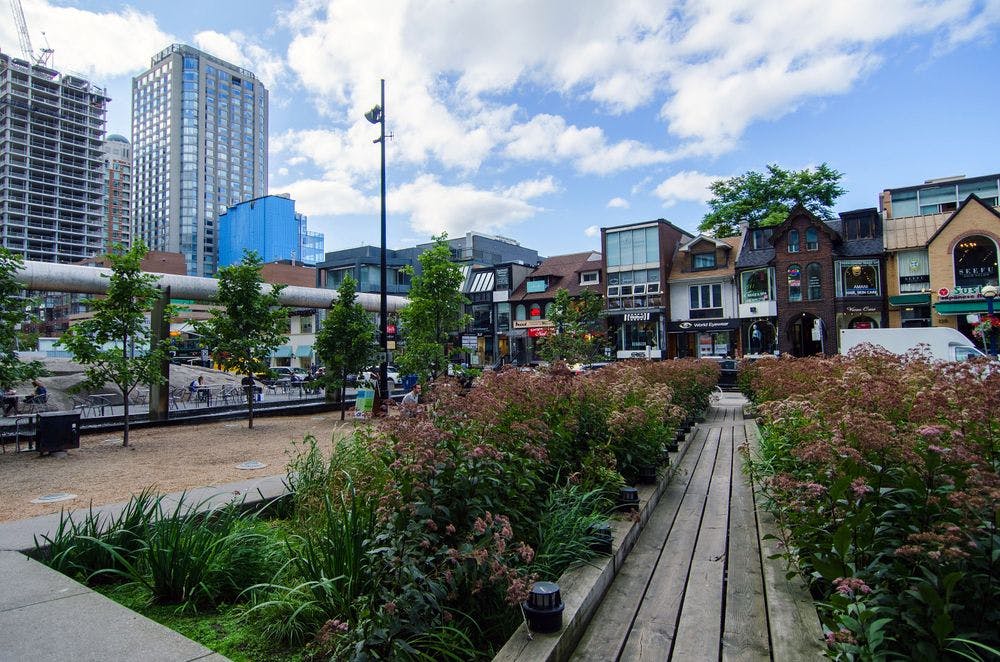
So, you’re thinking of moving to a new city. Maybe it’s a new job that’s uprooting you, or maybe it’s a cheaper house. Maybe you want to be closer to family, maybe you want to be farther away. In any case, soon all your belongings will be crammed into a moving van and you’ll be saying goodbye to your street.
But you love your street. You love your neighbourhood. You love its beautiful old houses. You love that it’s quiet and green. You love that when you’ve run out of milk, you can walk to the supermarket in three minutes. Where are you going to find another neighbourhood like this?
At Local Logic, we’re working on how to answer this question. Soon, for any neighbourhood in Canada or the U.S., we’ll be able to tell you which neighbourhood is most like it in another city. For example, what’s the equivalent of Williamsburg, Brooklyn, in Montréal? What’s the equivalent of The Mission, San Francisco, in Austin? What’s the Kensington Market, Toronto, of Chicago?
We’ve just about nailed down our process for making these kinds of comparisons. In the meantime, we’ve got some results from preliminary tests in the greater Toronto/Hamilton area (GTHA) in Canada. Using our in-house real-estate demand data and our recently overhauled neighbourhood data, we found the neighbourhoods with the most property listings in each of the city of Toronto’s former municipalities (Old Toronto, Etobicoke, Scarborough, York, East York, and North York). We then used our Location Scores and other location data to find the neighbourhoods in the Greater Toronto/Hamilton Area (GTHA), outside the city of Toronto, that are most similar to them.
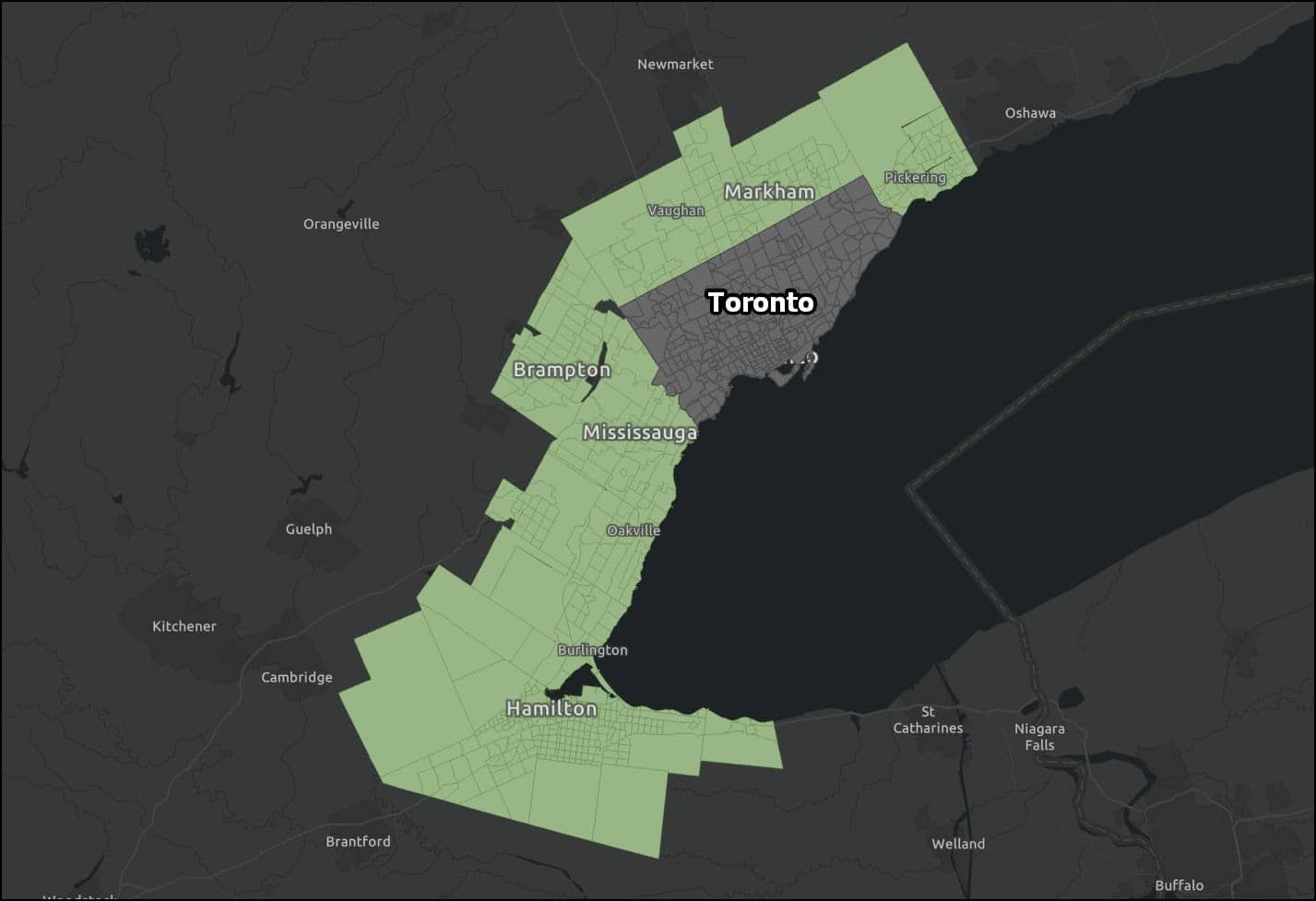
The characteristics we used to compare neighbourhoods included various transportation options, amenities, quietness, housing, and demographics. See the footnote for exactly what was included and what we purposefully excluded.
Without further ado, here are the highlights of our findings:
Willowdale East has the most property listings of all neighbourhoods in North York. It is most similar to Fairview, in central Mississauga.
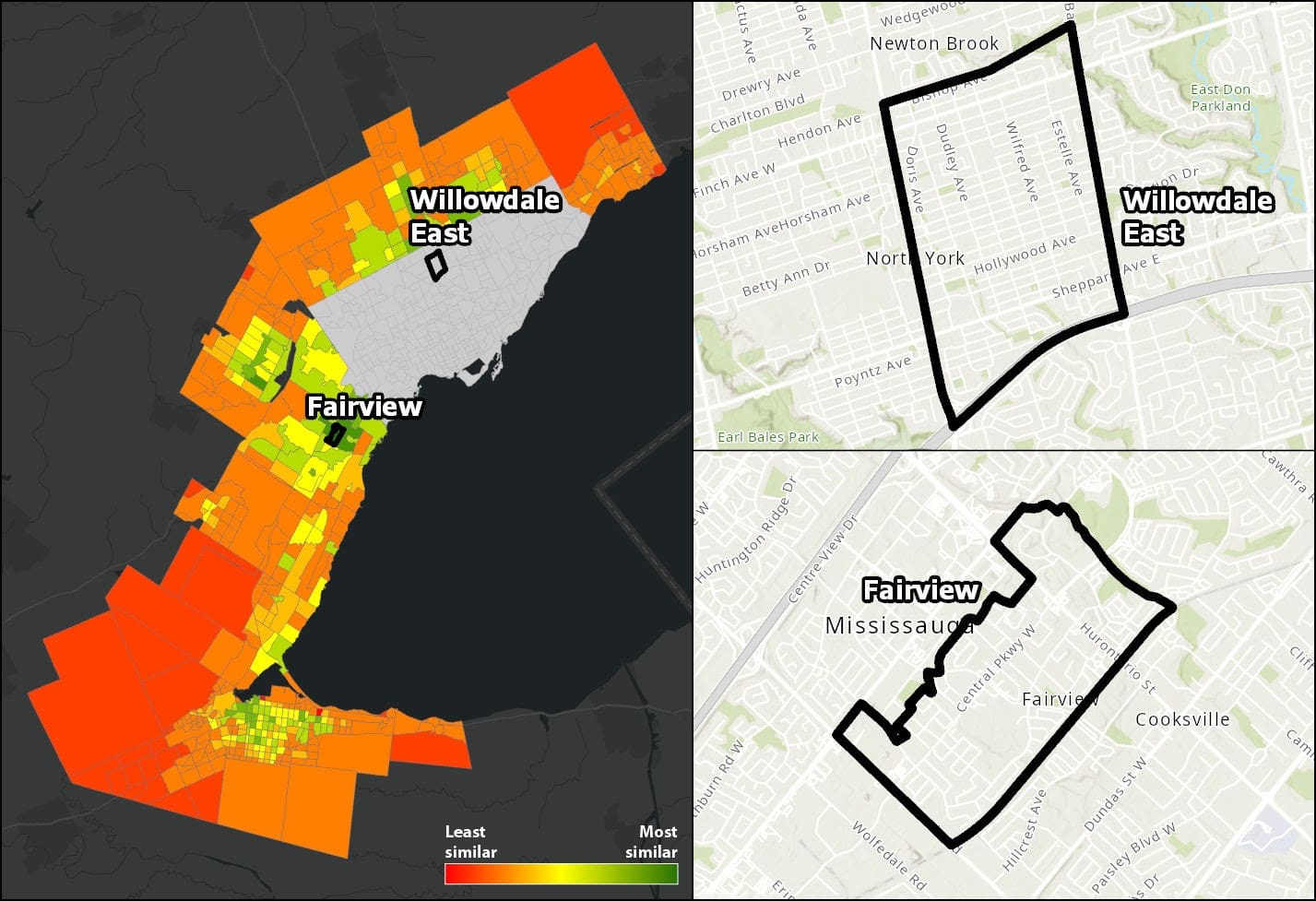
Willowdale East and Fairview could be classified as semi-urban. While most of the area of these neighbourhoods is covered in single-family homes, over 70% of residents actually live in apartment towers along their main commercial arteries (Yonge Street in Willowdale, Burnhamthorpe Road in Fairview). On top of this, they are both moderately walkable (7/10 on our Pedestrian-friendly score), have good park access (8/10 on our Parks score), and their residents are the same age on average (39 years old).
The differences are minor. Fairview has a slightly higher variety of grocery stores, has somewhat larger households, and is a bit more quiet (see table). Willowdale has better bus service and restaurants. But these two communities have a lot more in common than not.
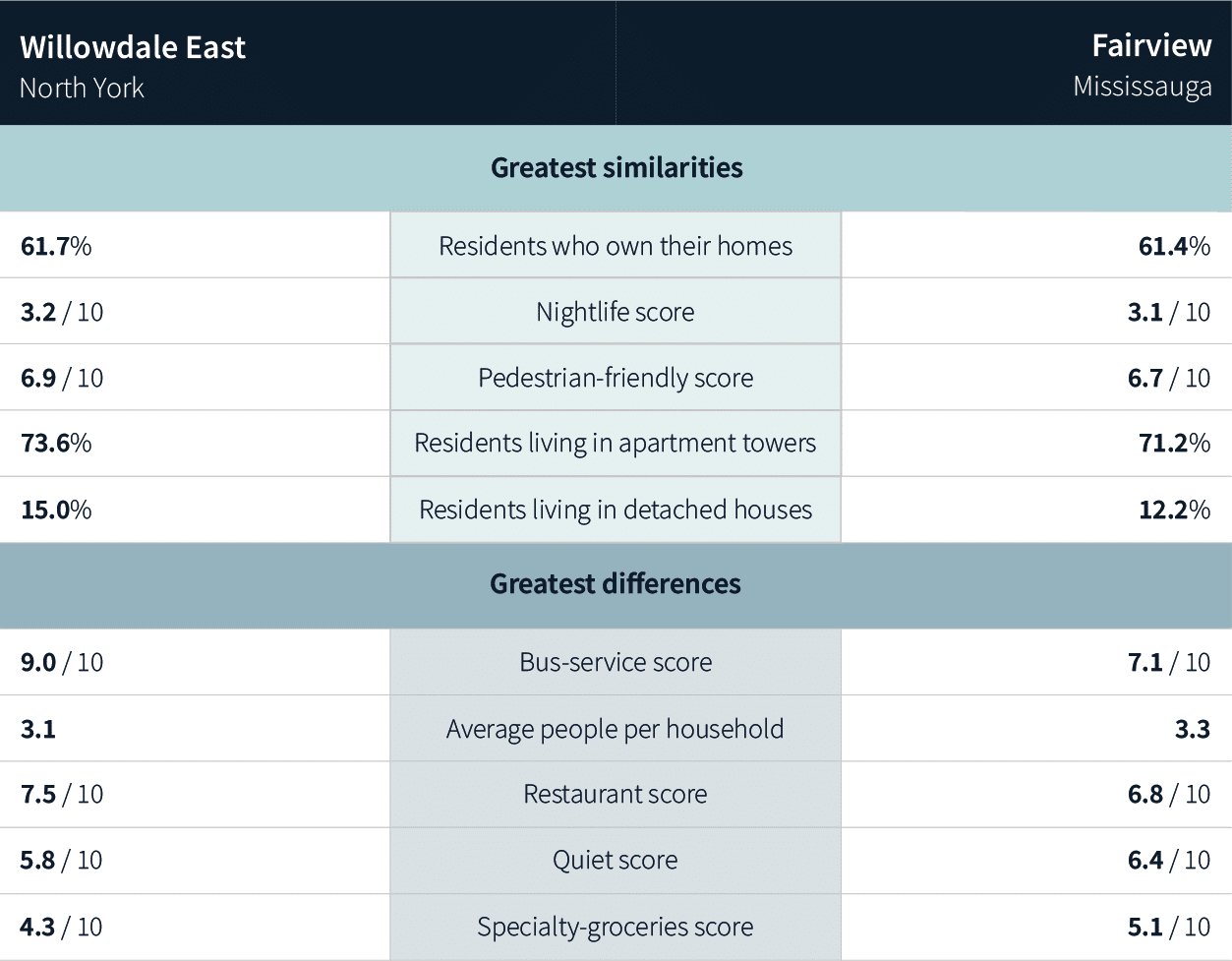
Malvern is one of the most popular neighbourhoods in Scarborough. Its lost twin in the GTHA is Fletcher’s Creek South in Brampton.
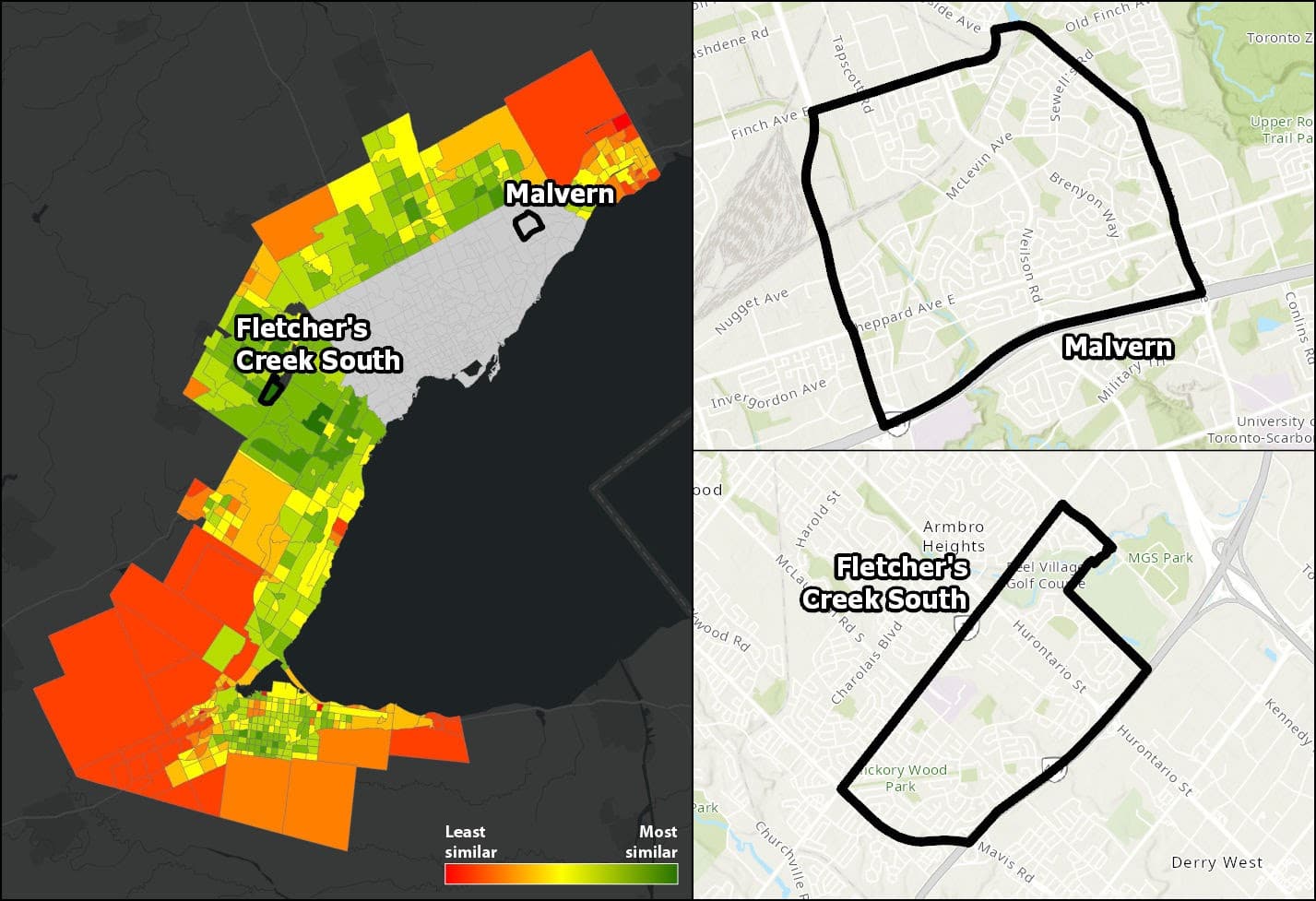
Both neighbourhoods are suburban in nature: they are very car-oriented, fairly quiet, and most residents own their homes rather than rent. Both have easy access to shopping malls, freeways, golf courses, and large parks (the Rouge National Urban Park for Malvern, Meadowvale Conservation Area for Fletcher’s Creek South). Additionally, they are both somewhat walkable (pedestrian-friendly score: 5/10) and have a similar number of restaurants (restaurant score: 5/10 on our scale), but have limited nightlife (2/10).
In terms of differences, Fletcher’s Creek South’s households earn about 10% more money, the transit there is not as good, and there are more single-family homes there compared to Malvern (see table). Overall though, the two neighbourhoods are very similar.
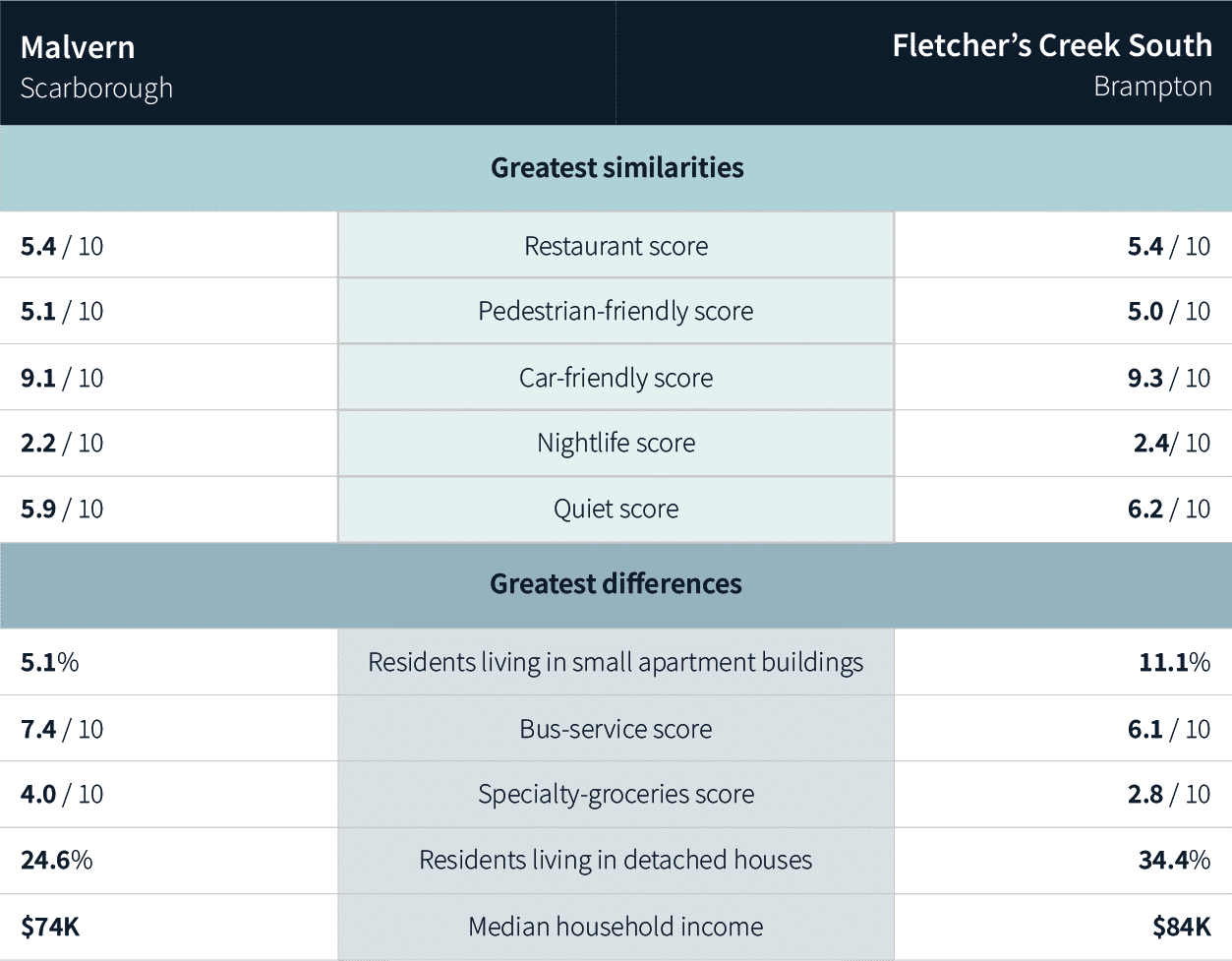
More people in Toronto search for homes in Yorkville than in any other neighbourhood, based on the data from our real estate partners like Realtor.ca. It is located in the centre of Old Toronto, at the corner of Bloor and Yonge, just blocks away from major institutions such as the University of Toronto and the Royal Ontario Museum. Its most similar cousin in the GTHA, outside of Toronto proper, is Central Hamilton.
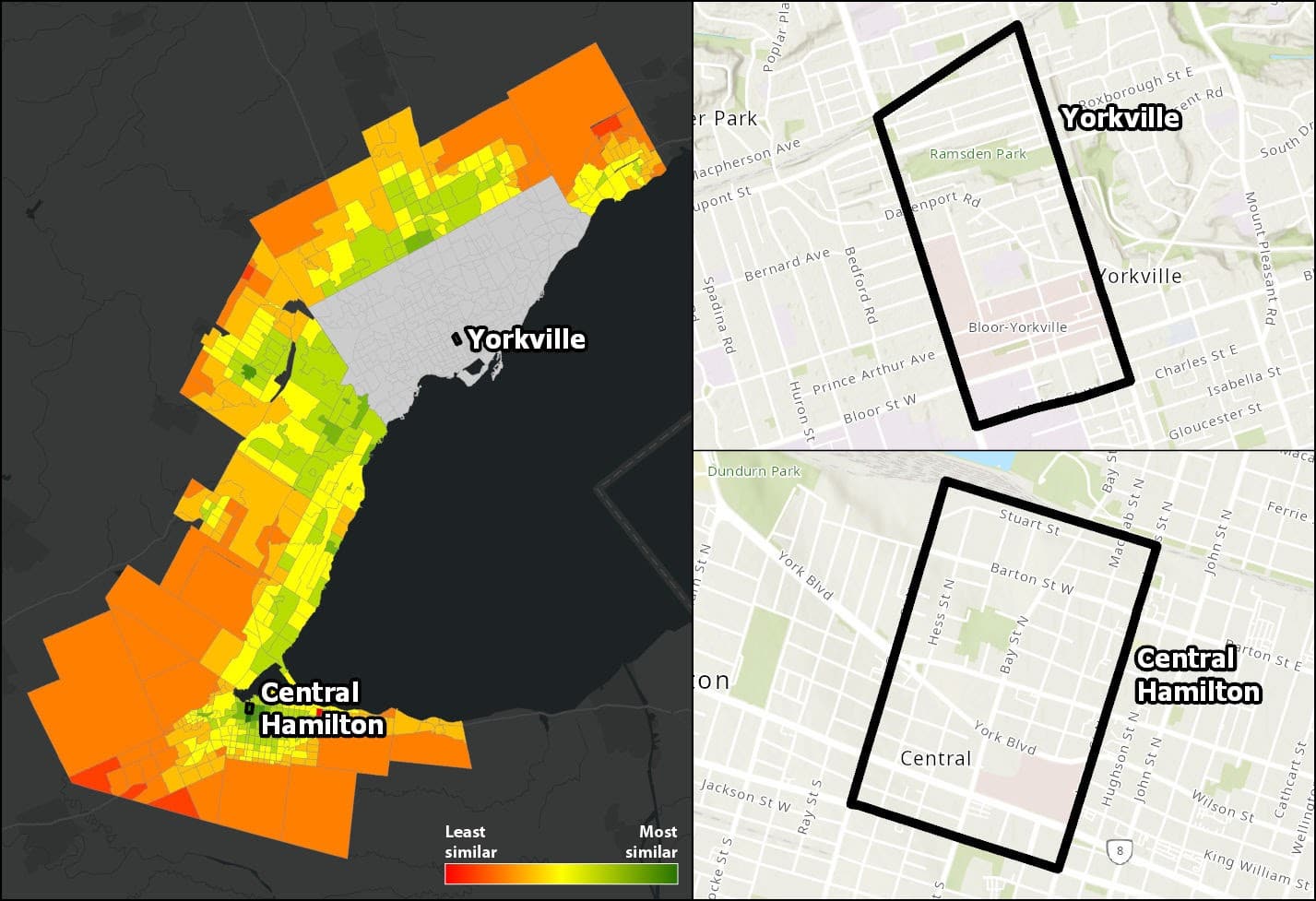
The aspects of these two neighbourhoods that are most alike are their proportion of homeowners (about 50% each), their low household size (2.5 people each), their high pedestrian-friendliness (10/10 for Yorkville, 9/10 for Central Hamilton) and high park access (10/10 vs 8/10).
But despite their similarities, they have many more differences. Yorkville has an older population on average (49 years on average versus 43), has twice the number of residents living in apartment towers (80% vs 40%), has a substantially wider variety of grocery stores and bars, and its residents earn twice as much as Central Hamiltonians (see table).
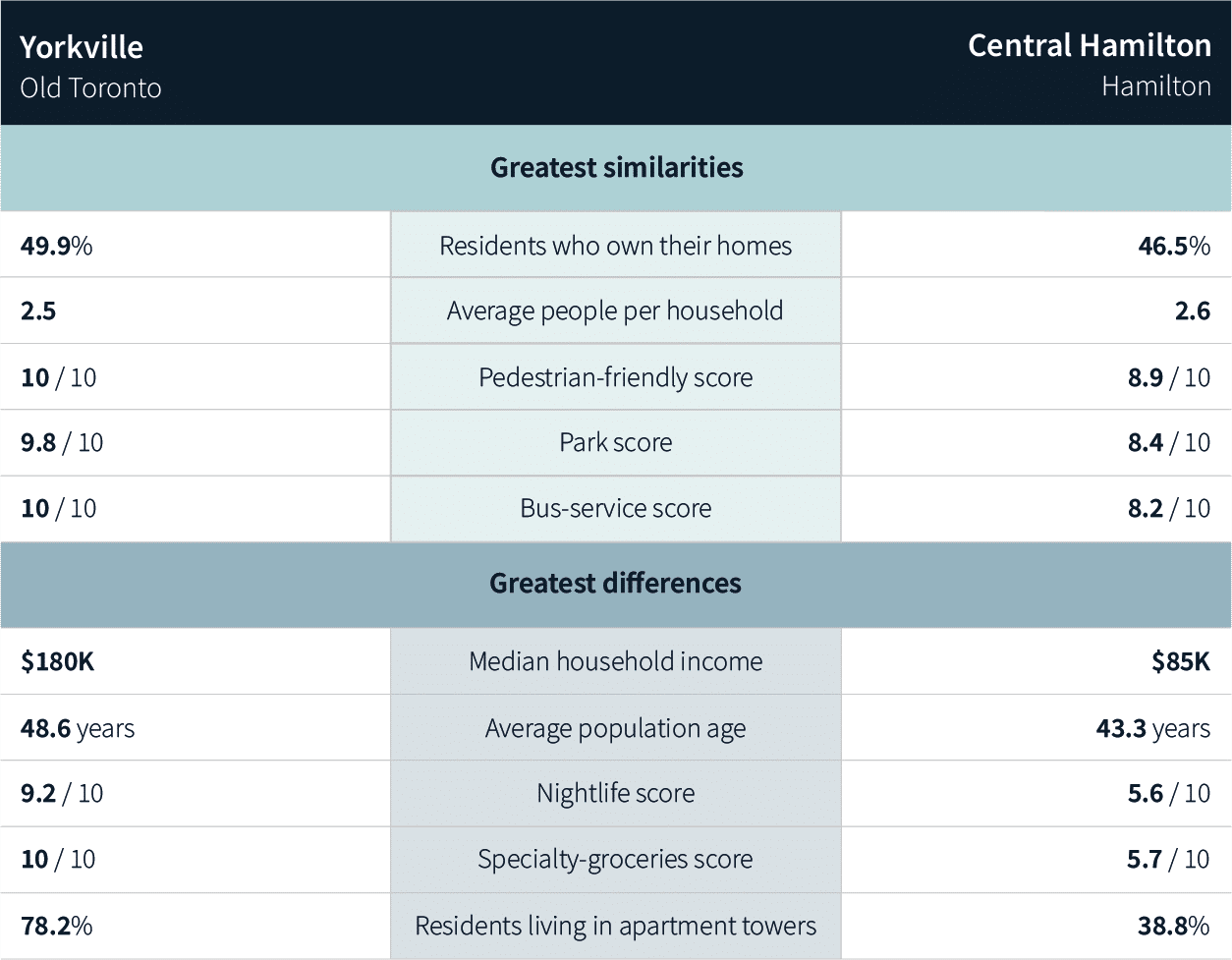
In other words: Within the GTHA, there isn’t anything outside of downtown Toronto that could be mistaken for downtown Toronto. You’d have to go to another big city to find an equivalent. Montréal? Vancouver? Across the border to Chicago or NYC? Let us know in the comments which cities’ neighbourhoods you’d like to compare.
Location:
Demographics:
Housing stock:
Variables purposefully excluded:
Curious about how other neighborhoods (or cities!) might fare?
Try the Insights Atlas to get in-depth location insights on any neighborhood, city, or address in the US and Canada.